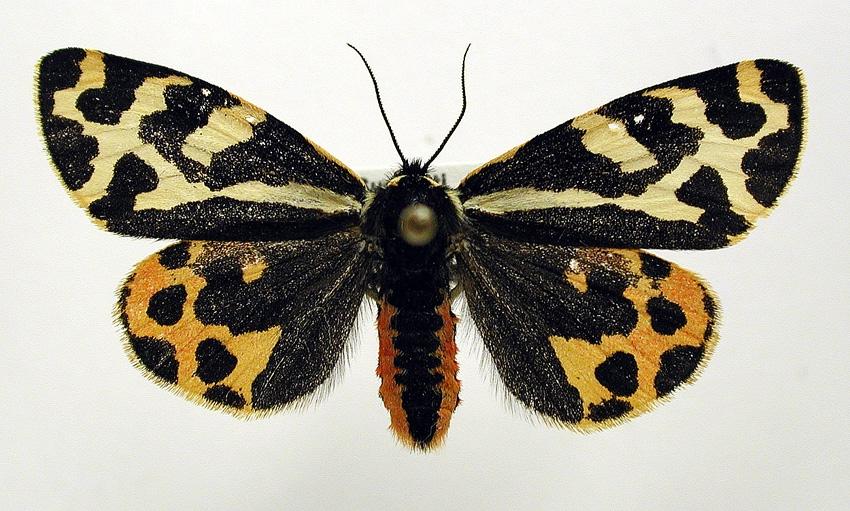
Lead supervisor: Chris Jiggins, Zoology
Co-supervisor: Ed Turner, Zoology
Brief summary:
This project will study variation in melanism in a moth and test the hypothesis that it represents an adaptation to climate.
Importance of the area of research concerned:
As the global climate changes rapidly, understanding the evolutionary responses of populations becomes increasingly important. Here the student will study natural variation in black patterning in a moth in order to understand how populations are changing with the warming climate. Melanism is an important adaptation in insects to deal with altitudinal and latitudinal variation in temperature, so is expected to respond to climate warming. The wood tiger moth has a higher degree of melanism in its patterns in northern parts of the range, with southern populations polymorphic and with lower overall levels of melanism. We have good genomic resources for the species, with a reference genome, CRISPR methods optimised, as well as extensive field data from our collaborators in Finland including historic collections. The moths can be reared in the laboratory and are amenable to physiological and genetic experiments. In summary, this is an exciting system to study evolutionary responses to climate change and thermal adaptation in a well studied insect system.
Project summary :
The wood tiger moth has been well studied with respect to a colour polymorphism in the male hindwing. However there is also considerable standing genetic variation in the extent of black colouration. There are long term samples available and anecdotal evidence for reducing melanic forms as climate has warmed in the southerly range around Estonia and southern Finland. The project will therefore analyse historical samples to test for temporal trends. In addition, we will determine the genetic basis for melanic patterns using GWAS with whole genome sequencing, and test directly for allele frequency changes through time. Finally the project will also investigate functional effects using activity tests of moths with more or less melanism. Overall the project is an exciting opportunity to link genomic patterns with phenotype and function.
What will the student do?:
The student will obtain whole genome sequences from a set of samples already obtained that are polymorphic for melanic patterns, and conduct a GWAS analysis to identify genes controlling melanic patterns. Functional analysis of the loci identified could then be carried out using CRISPR mutagenesis. The student will also obtain and analyse images of samples from historical and current collections (already available) to study phenotypic change through time and correlate this with climatic data. Finally the student will design and conduct functional tests of the role of melanic variation in thermoregulation, comparing metabolic activity of moths with different degrees of melanism under standardised levels of solar radiation. These could be complemented with field studies of activity levels in the wild, if the student is keen. Broadly the project could go in a more genomic/ physiological/field based direction depending on the interests of the student.
References - references should provide further reading about the project:
Yen, Eugenie C., et al. "A haplotype-resolved, de novo genome assembly for the wood tiger moth (Arctia plantaginis) through trio binning." GigaScience 9.8 (2020): giaa088.
Galarza, Juan A., et al. "Evaluating responses to temperature during pre-metamorphosis and carry-over effects at post-metamorphosis in the wood tiger moth (Arctia plantaginis)." Philosophical Transactions of the Royal Society B 374.1783 (2019): 20190295.
Brien, Melanie N., et al. "Colour polymorphism associated with a gene duplication in male wood tiger moths." bioRxiv (2022).
Applying
You can find out about applying for this project on the Department of Zoology page.